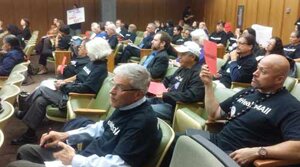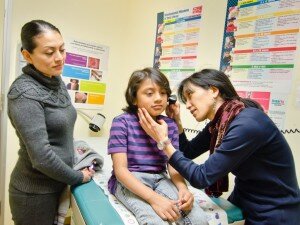Solano Coalition for Better Health: Access to Care for All
By Jennifer E. Arevalo Ruiz, Community Clinic Consortium
Since the Affordable Care Act was signed in March of 2010, more than 4 million Californians have gained access to health insurance. Individuals and families can now stay on their parents’ private employer sponsored health insurance up to the age of 26, preventative health care services are free of cost, and individuals with pre-existing conditions cannot be denied health insurance.
According to Covered California, during the second enrollment period, the nine greater Bay Area counties — including Solano County — enrolled 93,592 individuals. This is a very exciting time for those eligible to apply for health insurance! Unfortunately, there are an estimated 3 million individuals in California who will remain uninsured after full implementation of the Affordable Care Act in 2019. About half of the individuals who will lack insurance will be eligible for state funded Medi-Cal or subsidized insurance through California’s Health Exchange, Covered CA.
Many of these folks who will remain uninsured may experience difficulties in enrolling that prevent them from getting coverage. Some may also still find it unaffordable to enroll, even with access to subsidized coverage. And others will have immigration concerns that inhibit them from enrolling themselves or their eligible family members. In California, there are approximately 125,000 young adult immigrants who are eligible for full scope Medi-Cal but may be unaware of their eligibility or are concerned that getting Medi-Cal will harm their immigration status in the future.
The other half of remaining uninsured Californians will continue to lack insurance because they are explicitly excluded due to their immigration status. Not only does excluding this population from access to health insurance have negative health and financial impacts on individuals and their families, but it also has a seriously negative impact on California’s economy. In 2009, according to the Center for American Progress, denying health insurance to this population cost California upwards of $20 billion in lost productivity alone.
Currently, there are two policy efforts at the federal and state level that can help this population gain health insurance access. The first is President Obama’s Executive Order, which provides Deferred Action status to an expanded population of Childhood Arrivals and to parents of citizen and/or permanent legal resident children. Though this executive order is currently being challenged in the courts, should it be implemented, up to half a million Californians could gain access to state funded Medi-Cal, according to a policy brief by the UC Berkeley Center for Labor Research and Education and the UCLA Center for Health Policy Research.
The second policy effort is a California State Legislative bill called SB 4, a bill that many are calling the Health for All bill. This bill proposes to include children who remain uninsured due to their immigration status into Medi-Cal, assuming they would be otherwise eligible using existing income qualifications.
While we don’t yet know how these policy efforts will turn out, it is important that we encourage those who are already eligible for health coverage to enroll in the opportunities available to them. These efforts will ultimately help us get closer to living in a state where everyone has access to the health insurance they need to keep themselves and our communities healthy.
Jennifer Arevalo is the Community Affairs Manager at the Community Clinic Consortium, a member of Solano Coalition for Better Health.


 As people all across California prepare for the holiday season, this November marks an especially important time for all Californians. That’s because Nov. 15 is the beginning of the second open enrollment period for Covered CA.
As people all across California prepare for the holiday season, this November marks an especially important time for all Californians. That’s because Nov. 15 is the beginning of the second open enrollment period for Covered CA.
 Health centers are nonprofit, community-based providers dedicated to serving their community no matter who you are, where you come from or your ability to pay.
Health centers are nonprofit, community-based providers dedicated to serving their community no matter who you are, where you come from or your ability to pay. Saturday, May 31st, was World No-Tobacco Day 2014, a day intended to highlight the risks associated with tobacco use and the need for effective policies to reduce tobacco consumption.
Saturday, May 31st, was World No-Tobacco Day 2014, a day intended to highlight the risks associated with tobacco use and the need for effective policies to reduce tobacco consumption.
